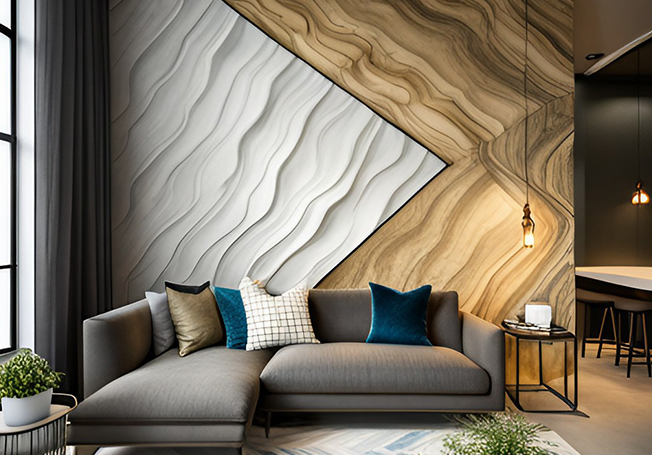How to Protect Your Furniture and Flooring During Home Painting Projects – 2024
When it comes to home painting projects, protecting your furniture and flooring is a crucial step in ensuring a smooth, stress-free experience. Whether you’re refreshing your living room or painting your entire home, the last thing you want is for spills, splatters, or dust to damage your valuable furniture and floors. In this guide, we’ll walk you through the best ways to protect your home’s interior while you tackle your painting projects.

Table of Contents
- 1. Clear the Area and Move Furniture During Painting
- 2. Use Plastic or Drop Cloths to Cover Furniture
- 3. Protect Your Floors with Painter’s Plastic or Canvas Drop Cloths
- 4. Tape Off Trim, Baseboards, and Edges
- 5. Use a Paint Shield or Edging Tool for Clean Lines
- 6. Protect Smaller Items with Plastic Bags or Boxes
- 7. Ventilate the Room to Prevent Paint Fumes
- 8. Clean Up Quickly to Avoid Stains
- 9. Consider Using a Professional for Extra Protection
- Conclusion
1. Clear the Area and Move Furniture During Painting
The first step to protecting your furniture is moving it out of the room. This will minimize the risk of accidental splatters and ensure that you have enough space to move around freely while painting. If you can’t move all the furniture, try to push large pieces toward the center of the room and cover them properly.
Pro Tip: Use furniture sliders to easily move heavy items without scratching your floors.
2. Use Plastic or Drop Cloths to Cover Furniture
If moving furniture isn’t feasible, the next best option is to cover everything thoroughly. Drop cloths are a must for protecting furniture, but not all drop cloths are created equal. You’ll want to use heavy-duty canvas or plastic drop cloths that are large enough to cover your furniture completely.
Plastic sheeting works well because it’s inexpensive and provides a waterproof barrier. However, it can be slippery, so make sure it’s secured in place. Canvas drop cloths are less likely to shift but are not as waterproof. Ideally, use a combination of both, covering the floor with canvas and the furniture with plastic.
3. Protect Your Floors with Painter’s Plastic or Canvas Drop Cloths
Your flooring is just as vulnerable to paint spills and splatters as your furniture. It’s essential to cover the floor completely before you begin painting. Painter’s plastic or heavy-duty canvas drop cloths are excellent options for protecting your floors.
Painter’s plastic is perfect for easy cleanup, especially when painting ceilings and walls. If you prefer a more eco-friendly option, canvas drop cloths are reusable and absorb paint well, reducing the risk of spills.
For extra protection, especially on hardwood floors or carpets, you can use adhesive-backed plastic that sticks to the floor, preventing movement and offering additional security against leaks.

4. Tape Off Trim, Baseboards, and Edges
While protecting your furniture and flooring is essential, you don’t want to forget about your home’s trim and baseboards. Painter’s tape is a simple but effective way to prevent paint from spilling over onto these areas.
Be sure to choose high-quality painter’s tape that sticks well but doesn’t peel off paint or finish when removed. Carefully tape off edges around windows, doors, and baseboards for a clean, professional look when you’re finished.

5. Use a Paint Shield or Edging Tool for Clean Lines
When painting walls near furniture or flooring, it can be tricky to maintain clean, straight lines. A paint shield or edging tool is an excellent way to ensure that paint stays exactly where it’s supposed to without spilling over onto furniture or flooring.
These tools are designed to provide extra control, allowing you to paint edges and corners without causing a mess.
6. Protect Smaller Items with Plastic Bags or Boxes
For smaller items like lamps, books, or decor, it’s best to place them in a safe location or cover them with plastic bags or boxes. This will keep them protected from any accidental paint splashes or dust that may accumulate during the project.
Pro Tip: Label boxes to keep track of your decor so that it’s easier to put everything back after the project is complete.
7. Ventilate the Room to Prevent Paint Fumes
While this tip doesn’t directly protect your furniture or flooring, it’s still essential to maintain good airflow during the painting process. Ventilating the room helps the paint dry faster and reduces the buildup of fumes, which can damage sensitive surfaces or finishes.
Open windows or use fans to help circulate the air and speed up the drying process.
8. Clean Up Quickly to Avoid Stains
If a spill or splatter does occur, it’s essential to clean it up immediately to avoid stains. Keep cleaning supplies, such as paper towels, rags, and water, nearby to address any accidents quickly. For oil-based paints, you’ll need mineral spirits or paint thinner, while water-based paints can be cleaned with soap and water.
The quicker you act, the less chance the paint has to settle into the fabric or surface, making cleanup easier and preventing permanent damage.

9. Consider Using a Professional for Extra Protection
If you’re not confident in your ability to protect everything during a painting project, or if you’re painting a large area, it may be worth hiring professional painters. They have the experience, tools, and materials to ensure that your furniture and floors are adequately protected and your project is completed with precision.
Bonus Tip: If you hire a professional, be sure to ask about the protective measures they will take. Most reputable painters will include furniture and floor protection as part of their service.
Conclusion
Taking the time to properly protect your furniture and flooring during a home painting project is essential for avoiding damage and ensuring a clean, stress-free experience. By following these tips—moving or covering your furniture, using drop cloths for your floors, taping off edges, and cleaning up spills quickly—you can focus on achieving a beautiful paint job without worrying about the mess.
If you’re looking to give your home a fresh coat of paint, make sure you’re prepared with the right protection materials. A little effort upfront will go a long way in saving you time, effort, and money in the long run!
Call to Action: Ready to protect your home? Contact us
today for expert advice and high-quality waterproofing solutions tailored to
your needs!
Check out our Blogs
Check out our Instagram



Leave a Reply